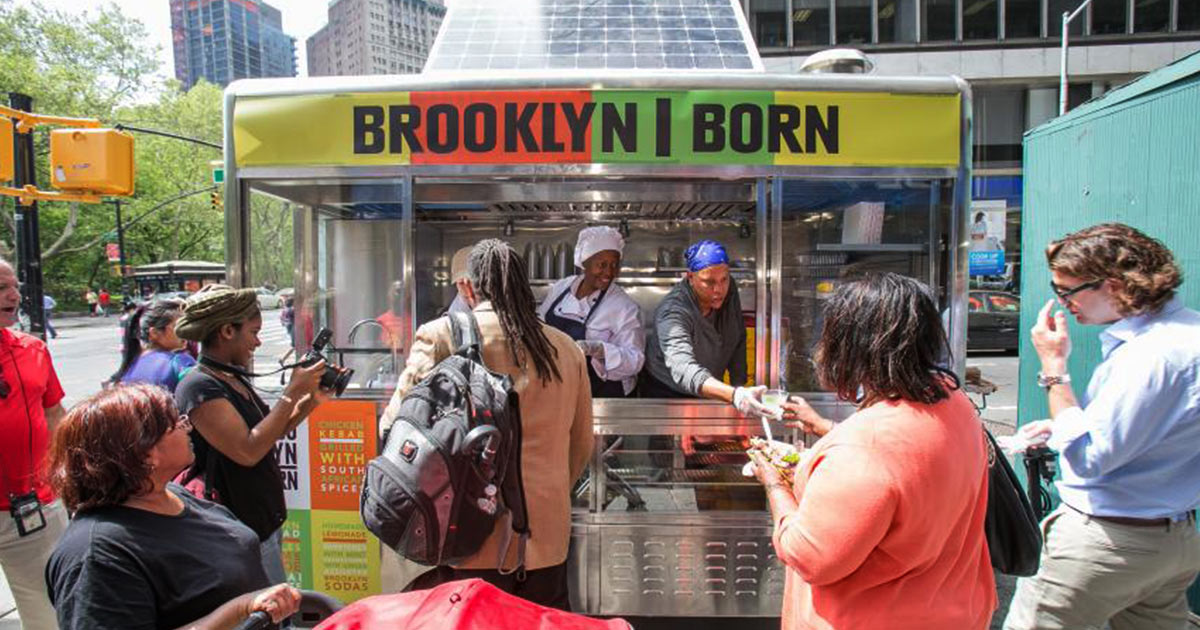A look at how NYC food carts have been re-engineered with smart technology
For decades, the food cart industry has been a staple of New York City street life. In fact, there are more than 5,000 licensed food carts and trucks and an estimated 3,000 unlicensed carts in the Big Apple. As mobile, fast-delivering, and convenient corner-side vehicles, food carts not only serve city dwellers on-the-go, they open entrepreneurial opportunities for current and future small business owners. According to a study done by Energy Vision, cart operators serve approximately 1.2 million customers every day. In March, International Business Times reported that food trucks have seen a 9.3 percent rise in revenues every year since 2010.
While the economic benefits of food carts are clear, a number of environmental problems that come with them permeate the air in more ways than one. The generators of traditional food carts emit CO2, NOx and particulate matter. CO2 is a harmful greenhouse gas that contributes to climate change, while the latter two pollutants can cause lung damage and worsen respiratory disease. These factors impact the health of customers and street vendors every day.
How can food carts go solar and get smarter?
But thanks to the ingenuity of MOVE Systems, which is reinventing the mobile food industry, hazardous food cart emissions can potentially be cut down by 95% percent. This is done through solar power and sensor-based technology.
Most food carts run on propane and add gasoline or diesel generators. MOVES solution for safer, healthier curbside street food service is the MRV100, a hybrid powered mobile food vehicle that operates on alternative fuel, batteries and renewable power.
Each MRV100 is equipped with cloud technology and strategically place sensors that collect data about the vehicle’s condition, location and fuel status. Key information on the cart’s on-board equipment, battery, inverter, compressed natural gas levels, and GPS data are securely sent to the MOVE Systems server and presented to employees. This enables real-time monitoring of the vehicles.
Can street vendors harness the Internet of Everything?
Of course, they can.
Taking advantage of the Internet of Things, the MOVE Systems mobile app allows for wholesale inspection of the vehicles every time they visit the fueling station. On the payment side, the MRV100s use POS technology and transaction processing services provided by First Data.
Additionally, MOVES’ vehicles include a freezer and refrigerator to keep perishable items fresh. Many traditional food carts are only able to keep coolers filled with ice to store such items. And because the carts are online, those appliance can easily be added to the Internet of Things.
MOVE Systems has gotten nearly 400 MRV100 leases signed and is currently in talks with expert chefs to serve gourmet food through the vehicles. The first 100 MRV100s taking to the streets of New York City are being supplied to American veterans to help them start with own small businesses.
Source | Cisco
Used with the permission of http://thenetwork.cisco.com/












